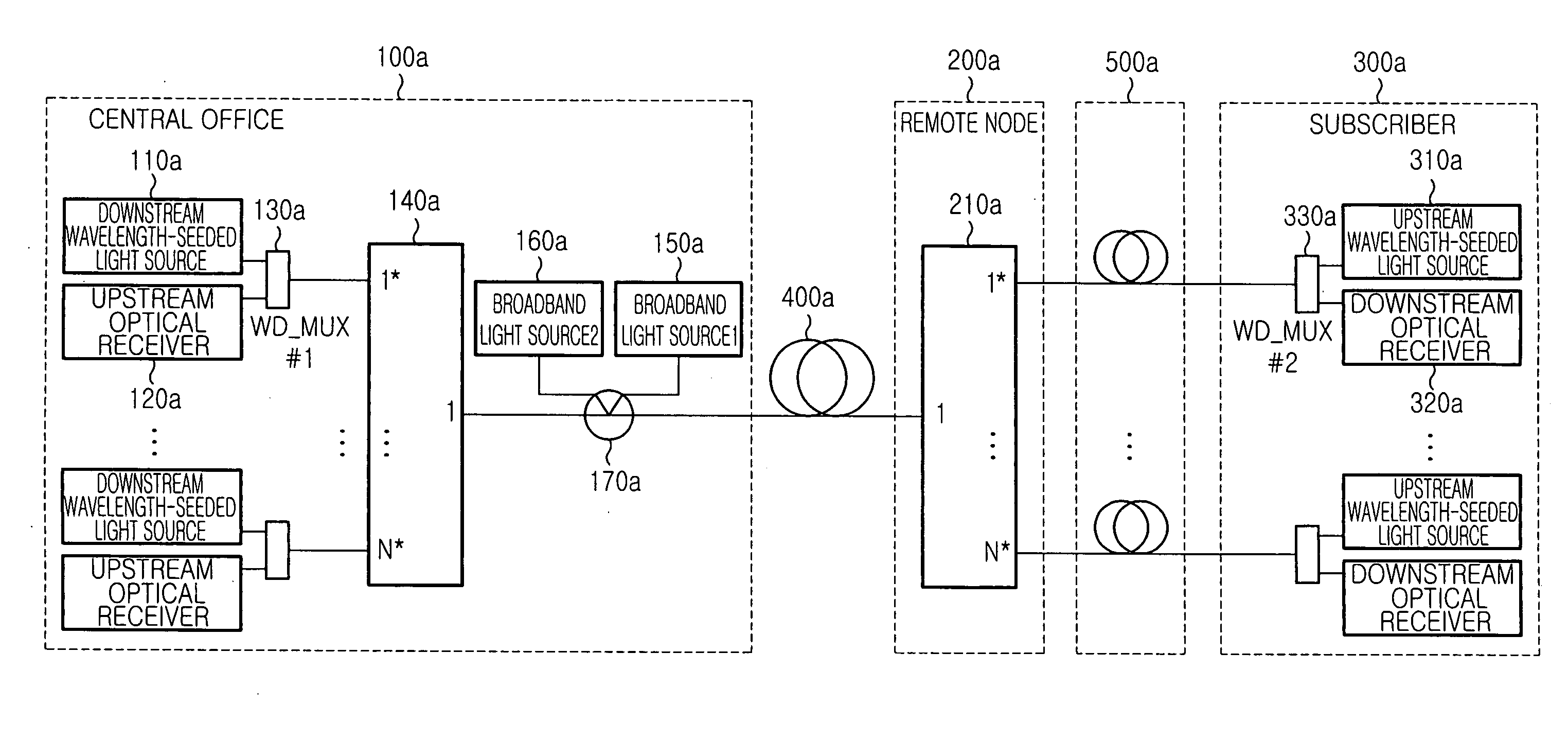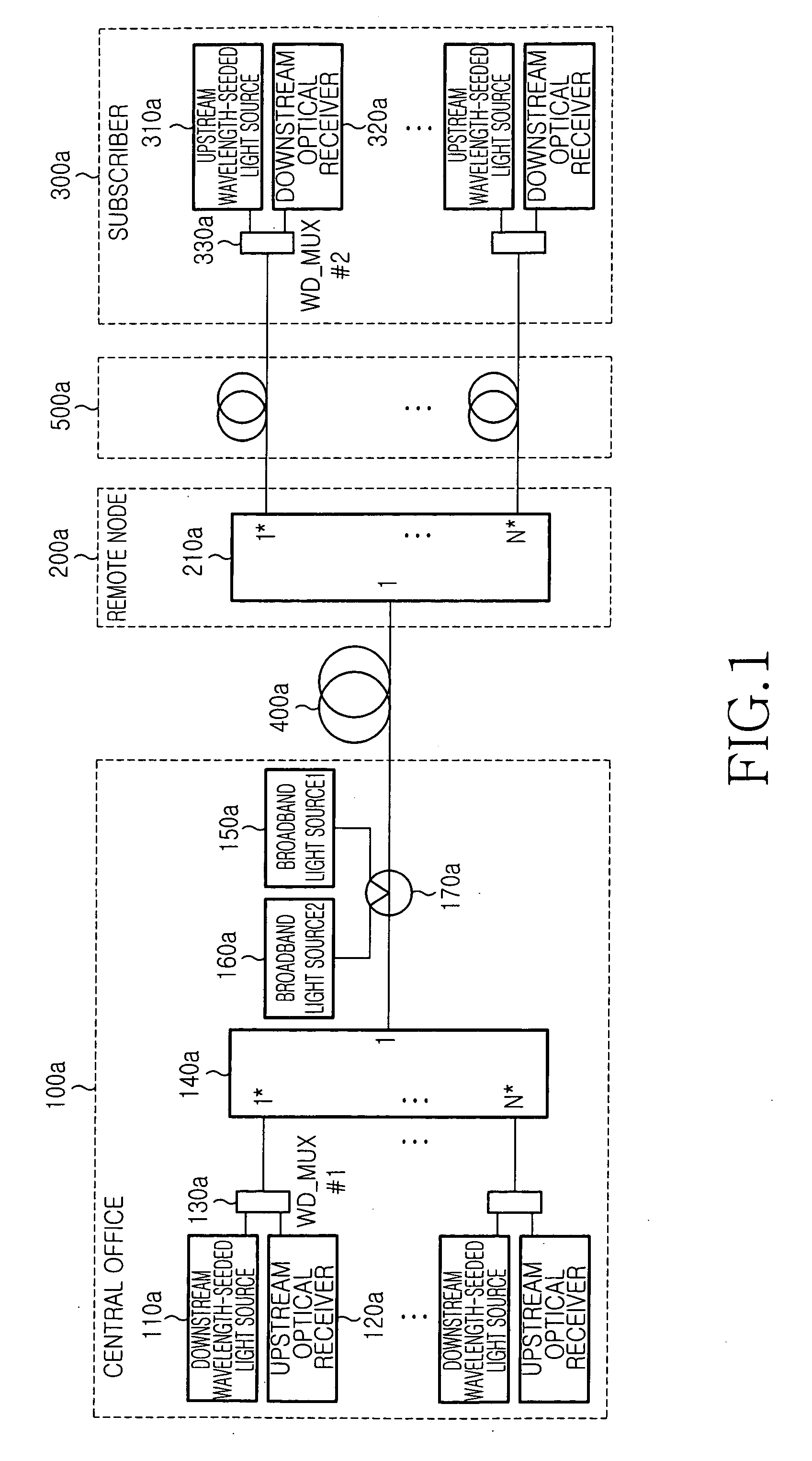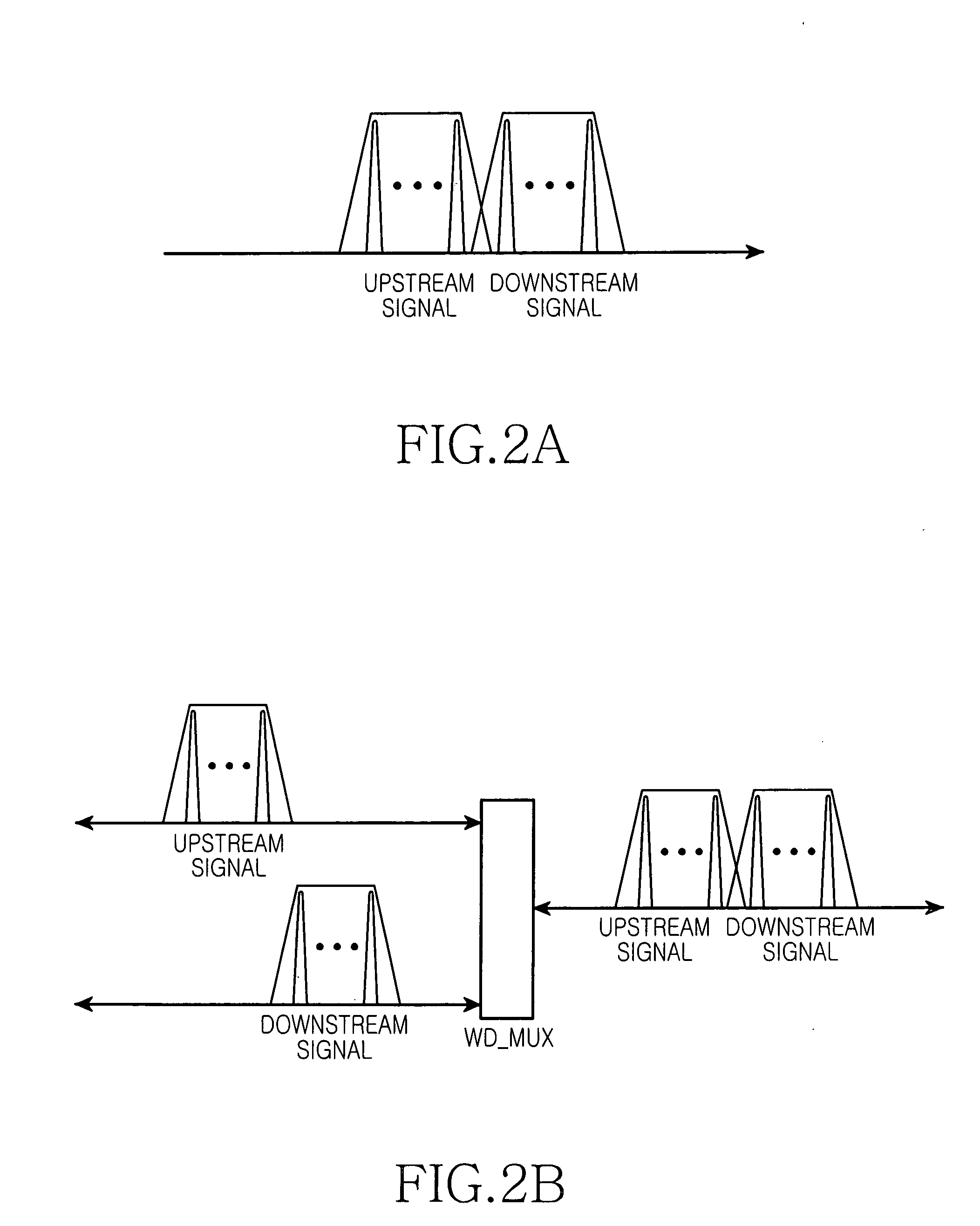Wavelength-division-multiplexed passive optical network system using wavelength-seeded light source
a wavelength-seeded light source and optical network technology, applied in wavelength-division multiplex systems, electromagnetic transmission, multi-component communication, etc., can solve the problems of high light source and wavelength stabilizing circuit, wdm-pon subscribers can be a great financial burden, and expensive light sources
- Summary
- Abstract
- Description
- Claims
- Application Information
AI Technical Summary
Benefits of technology
Problems solved by technology
Method used
Image
Examples
first embodiment
[0042]FIG. 2b conceptually shows the spectral bandwidths of signals multiplexed and demultiplexed by a wavelength-division-multiplexer (WD_MUX) provided in each of the central office and subscriber units of the WDM-PON system according to the present invention. In FIG. 2b, the left side of the wavelength-division-multiplexor (WD_MUX) shows a demultiplexed spectral bandwidth, while the right side shows a multiplexed spectral bandwidth.
[0043] The WDM-PON system having the structure as shown in FIG. 1 preferably uses a single module integrating the upstream optical receiver 120a, downstream wavelength-seeded light source 110a and wavelength-division-multiplexer (WD13 MUX) 130a of the central office 100a. Accordingly, the scaled-down optical communication system located in the central office 100a can accommodate a larger number of subscribers, whereas an inability to integrate these elements into a single module would, due to the volumes of the separate module, prevent such an accommoda...
third embodiment
[0059]FIGS. 5a and 5b shows the signal passing characteristics of the broadband Bragg grating 190c provided in the WDM-PON system according to the present invention. FIG. 5a shows the reflection of a broadband signal having a wavelength used for upstream transmission among broadband signals inputted to the broadband Bragg grating 190c. FIG. 5b shows the passing of a broadband signal having a wavelength used for downstream transmission among broadband signals inputted to the broadband Bragg grating 190c.
[0060] In the WDM-PON system according to any of the first to third embodiments of the present invention, the broadband light source should preferably be selected from an erbium-doped fiber amplifier, a semiconductor optical amplifier, a light-emitting diode and a superluminescent LED.
[0061] Also, the downstream wavelength-seeded light source should preferably be either a Fabry Perot laser or a reflective semiconductor optical amplifier.
[0062] Although preferred embodiments of the ...
PUM
 Login to View More
Login to View More Abstract
Description
Claims
Application Information
 Login to View More
Login to View More - R&D
- Intellectual Property
- Life Sciences
- Materials
- Tech Scout
- Unparalleled Data Quality
- Higher Quality Content
- 60% Fewer Hallucinations
Browse by: Latest US Patents, China's latest patents, Technical Efficacy Thesaurus, Application Domain, Technology Topic, Popular Technical Reports.
© 2025 PatSnap. All rights reserved.Legal|Privacy policy|Modern Slavery Act Transparency Statement|Sitemap|About US| Contact US: help@patsnap.com



